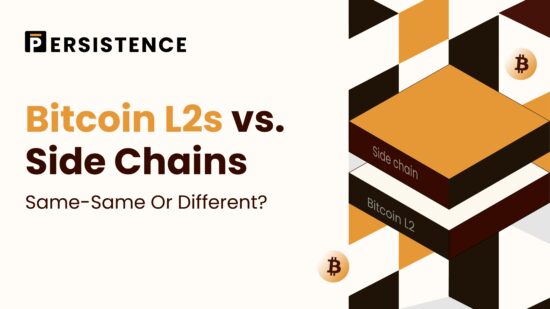Tl;dr
- As BTCfi starts to thrive, the number of Layer 2s and Sidechains continues to rise, with 77 scaling solutions in development and $3.6 billion TVL.
- Understanding the distinction between Sidechains and Layer 2s is crucial, as it can reveal potential differences in security implementation.
- With so many Layer 2s and Sidechains active, BTCfi needs an interoperability solution between all BTC variants.
With BTCfi on the rise, numerous Layer 2s and Sidechains have emerged to enhance Bitcoin’s programmability and scalability. According to BTCL2.info, there are currently 77 scaling solutions, boasting a total value locked (TVL) of $3.61 billion.
The rapid growth of the Layer 2 market is a testament to the future direction of the Bitcoin ecosystem as developers rush to improve the functionality of the main blockchain by enhancing its scalability and programmability.
However, the definition of constitutes a true Layer-2 remains contentious, with many Sidechains being widely misunderstood as natural Layer 2s
Despite their similar structures, there are subtle differences between Sidechains and Layer 2s that can help you tell them apart. Let’s take a deep dive into it!
Bitcoin Layer-2s Vs SideChains: What’s The Difference?
Bitcoin’s current capacity to validate only seven transactions per second has led to an urgent need for scalability solutions. Coupled with Bitcoin’s lack of programmability, this has driven the development of projects that aim to introduce smart contracts on the Bitcoin network and help increase its throughput.
This brings us to the concepts of Layer-2s and sidechains. But what are they, and how can we differentiate between them?
What Are Layer 2s?
A Bitcoin Layer 2 is a protocol built on top of the Bitcoin blockchain to improve its scalability. It facilitates the majority of transactions off of the main chain and takes them to Layer 2.
As a separate execution layer, Layer 2s can compute transactions and then submit the details to the main layer for consensus.
Layer 2s will use BTC as the gas token and leverage the Bitcoin blockchain settlement. By relying on the mainnet for the final settlement, Layer 2s typically will inherit the security and decentralization of the main Bitcoin blockchain.
What Are SideChains?
On the other hand, Sidechains are blockchains that run parallel to the native Bitcoin blockchain but don’t inherit its security.
Sidechains will use their own consensus mechanism which can be fine-tuned for speed and scalability. Typically, they will have a bridge that connects to the main blockchain, but they don’t traditionally support the parent chain’s native asset and use their own token for gas transactions.
As a Sidechain is a brand new blockchain, it can have its own features and programmability. Sidechains can introduce enhanced scalability solutions and smart contracts to the Bitcoin world.
So, What’s the Difference?
As you can see, Layer 2s and Sidechains are quite similar. They both provide scalability solutions to the Bitcoin network, allowing it to achieve a higher throughput.
However, although there are no formal definitions, some very slight nuances dictate what might differentiate a Sidechain from a Layer 2.
The most important nuance is that a true Layer 2 should run on top of the main Bitcoin blockchain, utilize BTC as the gas token, and inherit its security.
Furthermore, another barometer often used to distinguish them apart is if a user can withdraw their funds from Layer 2 without asking for permission. To illustrate this concept, let’s look at the Lightning Network.
The Lightning Network is a Layer-2 scaling solution that utilizes state channels. To enter the network, users have to lock some BTC into a node on the Lightning Network. Once locked, they are free to send BTC between nodes in the network through state channels. When users want to remove their BTC from the Lightning Network, they can withdraw their BTC at any time by sending a simple transaction. This transaction doesn’t require any permission from a third party, defining it as a Layer 2.
On the other hand, if a user must request permission or approval to withdraw their asset from the Layer 2, it’s not a true Layer 2.
But does it really matter?
Well, the inner workings of what happens in the background won’t be too important for users. They just want to move money around and are not too concerned with how it works.
However, the underlying architecture does influence several critical aspects that might concern users.
For example, while true Layer 2s can leverage Bitcoin’s gigantic security, Sidechains can’t.
This would mean that Layer 2s are inherently more secure than Sidechains, posing fewer vulnerabilities.
In addition, users must consider centralization risks. Sidechains traditionally use their own cross-chain communication tools or oracles, which are trusted entities that provide external data to the blockchain, to stay consistent with the main blockchain. While oracles serve as innovative methods to bring off-chain data to blockchain, they’re not fully secure and can introduce potential vulnerabilities.
Essentially, if you care about security, then it does matter if it’s a Sidechain or Layer 2.
Multiple Variations of Bitcoin: Interoperability
Despite the misunderstandings of the pure definition of a Layer 2, it’s clear that both Layer 2s and Sidechains are here to stay. Venture capitalists are pouring millions into these projects to enhance Bitcoin’s efficiency, scalability, and programmability.
Here’s the kicker.
The majority of Layer-2s and sidechains brings its own unique variant of BTC, which currently exists in isolation within the broader BTCfi ecosystem. The many BTC variants aren’t fungible and cannot be swapped easily between one another, significantly reducing the growth potential of the BTCfi world.
This is where interoperability solutions come into play.
Interoperability solutions aim to create a platform where all BTC derivatives can interact and be seamlessly swapped, bridging the gap between various Bitcoin scaling solutions and enhancing the cohesion of the BTCfi ecosystem.
Persistence One is building an interoperability platform that will enable the easy trading of Bitcoin-related assets (native, wrapped, and yield-bearing) across chains. The solution will help to “Move Bitcoin around” through user-friendly, fast, and zero slippage cross-chain swaps powered by intents.
Once launched, Persistence One will support these different BTC variants and help push the boundaries of BTCfi forward by introducing fungibility between BTC tokens, regardless of whether it’s defined as a Layer 2 or a Sidechain.
About Persistence One
Persistence One is building a Bitcoin interoperability solution to enable cross-chain BTC swaps across Bitcoin Layer 2s.
The rapid rollout of Bitcoin L2s and side chains has led to fragmentation, hurting BTCfi scalability. Using the power of intents, Persistence One will enable users to move assets across Bitcoin Layer 2s more efficiently than traditional bridging, offering fast, secure, zero-slippage cross-chain swaps.
Twitter | LinkedIn | Telegram | YouTube | Reddit | [email protected]





